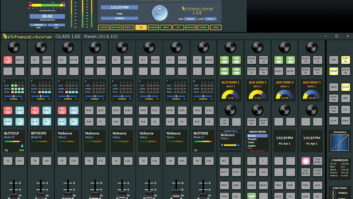
Fig. 1: No that’s not a torture device, just a circuit breaker resetter. Darren James Morton is the radio director at Grove City College’s FM station WSAJ in Grove City, Pa. Darren writes that he’s had excellent results using the Cloudlifter CL-1 units we mentioned recently. The CL-1 Mic Activator is a compact solution for common audio problems faced in the field as well as in the studio.
It’s designed for all passive microphones including ribbons. The CL-1 safely uses any standard phantom powered microphone input device to provide up to +25 dB of ultra-clean, transparent gain.
This additional gain can improve the performance of passive microphone signals by driving stronger, cleaner signals over longer XLR cable runs, which makes them suitable for broadcast or live sound reinforcement.
Darren calls the CL-1 amazing. He uses them with a Shure SM7B, to get the level high enough to use with less expensive live sound or remote mixers.
Normally with these mics, you have to have the mic preamp gain fully open, which creates all kinds of noise issues for the little Mackies, Spirits, Yamahas, Behringers and the like. Darren does a couple of live talk radio remotes a year, and uses the SM7Bs with the Cloudlifter, obtaining excellent results.
Darren has even used the Cloudlifter and the Shure SM7Bs with an Allen & Heath ZED, without any noise issues at all.
On a purely personal note, Darren has used the same combination on solo mics for his jazz band, and enjoyed excellent sonic results. The Cloudlifters are less than $200 apiece.
See radioworld.com/links for a link to the product.
* * *
Fig. 1 may look like some sort of medieval torture device but it actually is a motor-driven large circuit breaker (CB) resetter, pointed out by our friend and colleague Buc Fitch.

Fig. 2: When activated, the 120V motor fully restores the breaker arm. Quite often, line surges — or back surges from an abrupt or bouncing power disconnect — will cause a large CB to experience a nuisance trip. You don’t want to drive all the way out to the site to reset the breaker, so you have this motor-driven resetter do the job for you — by remote control.
Here’s how it works: First, as seen in Fig. 1, the CB is allowed free travel to trip. An attachment is placed on the handle, so that there is no “drive” tension on the CB handle. When over-current or a thermal trip occurs, the handle can move to the tripped position.
The motor seen in Fig. 2 is 120 volts, so obviously you would get this power from a UPS if the resetter was on the building or system main. When activated, the rotary motion of the device picks up the tripped CB handle, and moves it through its “off” and then “on” positions, thus resetting it.
A standard option (which can be field installed) is an aux switch on these big CBs and those contacts stop the motor and drive system in the “trippable” position. A closeup of the resetting mechanism is seen in Fig. 3.
The device is not simple, not elegant, not beautiful; but it does the job very well. Buc writes that the last one of these he was involved in was on a rig in a miserable station, on an island (heave ho), at the end of an hour’s drive for the CE.
After installation, the CE had the affection for Buc to call at 3 a.m. to tell him how very happy he was. He’d just remotely reset the CB, and got his station back on using his telephone on the nightstand rather than getting up, driving an hour, rowing in the dark and walking up the hill to reset the CB. So, these units do have their place.

Fig. 3: Here is a closeup of the resetting mechanism. Buc says these units fit on a model FEL “molded case” circuit breaker, and they are available from 15 to as high as 800 amps. Of course, if resetting the breaker once doesn’t do the trick, you probably have a short length of time to go investigate.
Charles “Buc” Fitch, P. E. and Radio World contributor, can be contacted at [email protected].
* * *
While contracting, I was called to a station that was tripping on and off. At the transmitter, I found it was the remote control that was resetting the transmitter, over and over again. Local control took care of that, and I could fix the problem.
When I stopped by the studio later, I found the jock had wedged a toothpick between the chassis and the “RAISE” button on the Moseley remote control, forcing the button to stay depressed.
As soon as the transmitter overload tripped the transmitter off, the toothpick-enabled RAISE switch recycled the transmitter back on — if only for a moment or two. It shut down immediately, only to be RAISED again, thanks to the toothpick.
When I asked the jock why he used a toothpick to hold the button down, he replied that his finger was getting tired from repeatedly pushing the button to get the transmitter to stay on the air. Don’t you just love this business?
Contribute to Workbench. You’ll help your fellow engineers and qualify for SBE recertification credit. Send Workbench tips to [email protected]. Fax to (603) 472-4944.
Author John Bisset has spent 44 years in the broadcasting industry and is still learning. He handles West Coast sales for the Telos Alliance. He is SBE certified and a past recipient of the SBE’s Educator of the Year Award.












